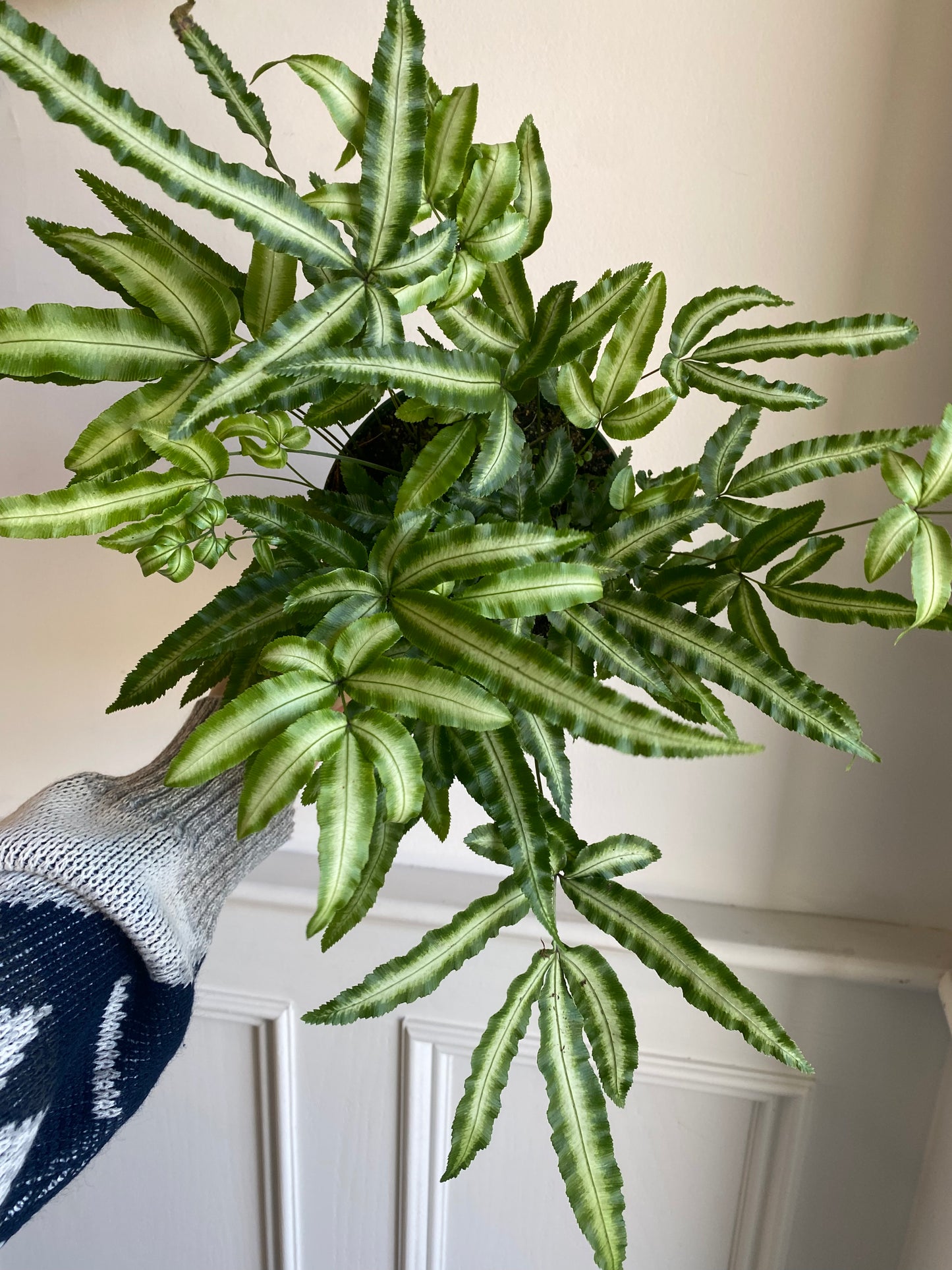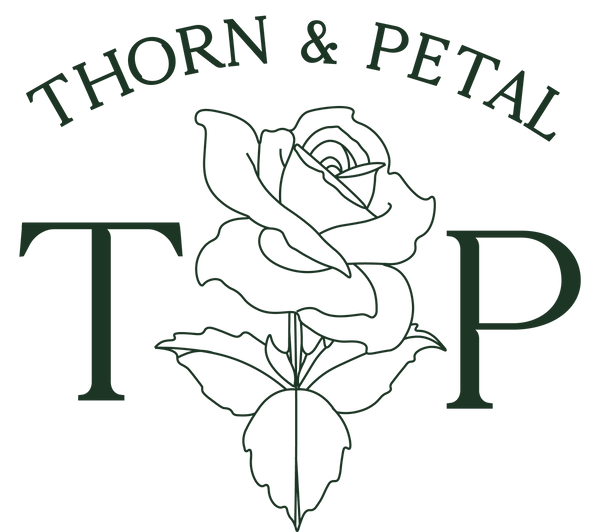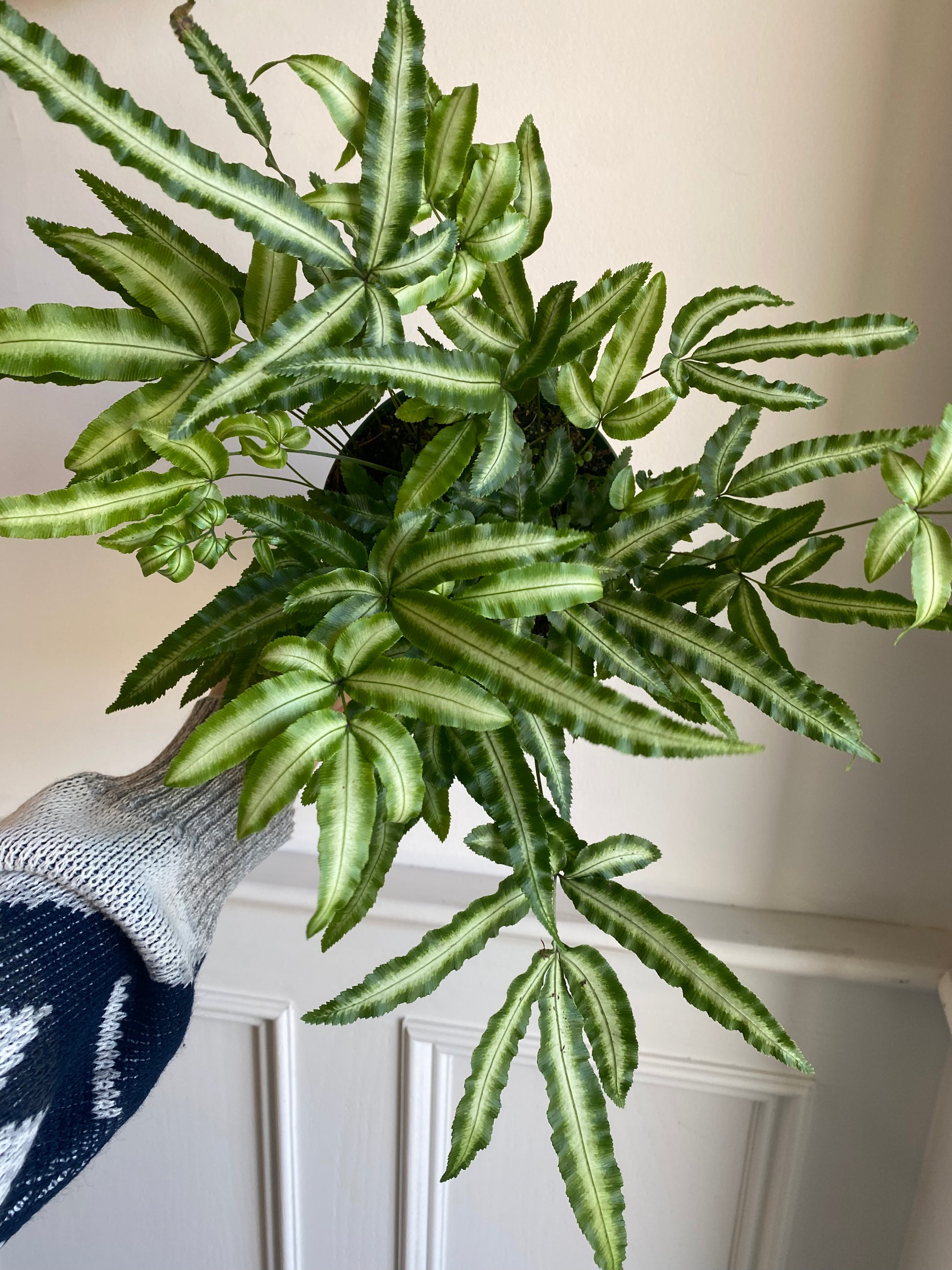Ribbon Fern
Ribbon Fern
Couldn't load pickup availability
Ribbon fern, scientifically known as Pteris cretica, is a popular fern species appreciated for its graceful foliage and ease of care. Here's some information about ribbon fern:
-
Appearance: Ribbon ferns have elegant, arching fronds that are divided into numerous leaflets, giving them a feathery appearance. The leaflets are typically lance-shaped and may have serrated edges. The foliage of ribbon ferns ranges in color from light green to dark green, and some varieties may have variegated leaves with stripes or patches of white or silver.
-
Native Habitat: Ribbon ferns are native to tropical and subtropical regions around the world, including Africa, Asia, Australia, and the Americas. They are typically found growing in moist, shaded habitats such as forests, stream banks, and rocky slopes.
-
Cultivation: Ribbon ferns are popular choices for indoor gardens and are prized for their ability to thrive in low light conditions. They prefer bright, indirect light but can tolerate partial shade. Direct sunlight should be avoided, as it can scorch the leaves. Ribbon ferns prefer consistently moist soil and high humidity levels. They benefit from regular misting or placement in a humid environment, such as a bathroom or kitchen. They prefer temperatures between 60°F and 75°F (15°C to 24°C) and should be protected from drafts and sudden temperature changes.
-
Watering: Keep the soil consistently moist but not waterlogged. Water ribbon ferns when the top inch of soil feels dry to the touch, allowing excess water to drain away freely from the pot. Avoid overwatering, as this can lead to root rot and other issues. In winter, reduce watering frequency as the plant's growth slows down.
-
Soil: Plant ribbon ferns in a well-draining potting mix rich in organic matter, such as a mixture of peat moss, perlite, and compost. Ensure that the pot has drainage holes to prevent waterlogging, which can lead to root rot.
-
Fertilization: Feed ribbon ferns with a balanced liquid fertilizer diluted to half-strength every two to four weeks during the growing season (spring and summer). Reduce or eliminate fertilization in fall and winter when the plant's growth slows down.
-
Pruning and Maintenance: Trim or prune ribbon ferns regularly to remove dead or yellowing fronds and maintain their shape. Groom the foliage occasionally to remove dust and debris. Ribbon ferns are relatively low-maintenance and do not require extensive pruning.
Share


